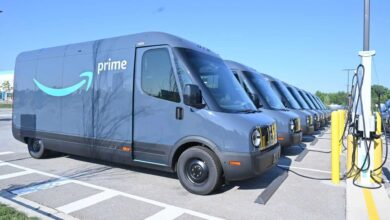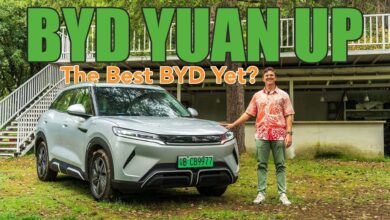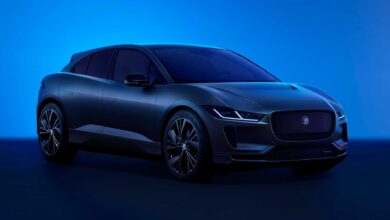Should All New Cars Be Electric? Journalist Shares His Story

Electric vehicles are just beginning to gain popularity with consumers, and while buyers are embracing them cautiously, some wish that an electrified future was already here. Recently, one commentator explained why he thought every new car should be fully electric after spending a week with a new gas car.
Above: A Tesla and other EVs charging in a parking garage (Image: Michael Fousert / Unsplash).
In an op-ed for Jalopnik, writer Daniel Golson explained that he doesn’t want to drive internal combustion engine vehicles anymore, even after driving some of the best gas cars out there in recent years. Golson says that he’s walked away from almost every ICE he’s driven in the past couple of years thinking that it would be better as an EV.
While he says that EVs “can’t match the visceral drama of a loud, powerful engine,” Golson highlights recent experiences with the Mercedes-AMG EQE as offering plenty of exciting new features to make it worthwhile. He goes on to say “the power and serenity offered by an electric powertrain is unmatched,” adding that he’s excitedly cheering on widespread EV adoption.
Many buyers say similar things about Tesla’s ecosystem offering enough features to keep them busy while offering a quiet, smooth and aerodynamic driving experience. On the inside, Teslas include a range of paradigm-shifting features such as regenerative braking, driving modes and mobile app vehicle access, not to mention the improvements made over time to their cars through over-the-air software updates or the many other interesting settings.
Golson makes the argument for EV drivetrains across the board, from the luxury sector to the economy — or as “economy” as EVs get in this day and age. He names a handful of EVs he’s tried, each of which he’s found more than satisfactory from a driving perspective.
He does share concerns over the need for more dense and reliable charging infrastructure, though he also says this will improve with more EVs purchased. Tesla is also piloting opening its Supercharger network, the largest charging network in the world, to non-Tesla EVs in a number of countries, and the automaker plans to bring the program to the U.S. at some point.
To be sure, Tesla remains the EV sector’s dominant leader, even as increasing competition from other automakers gradually carves away at market share. Tesla is at least a few years ahead of most legacy automakers, and the company has set the bar for what EVs can do. Those who have driven the Model S Plaid will likely agree with Golson’s sentiment, understanding how simultaneously smooth and quick an EV can be.
Golson does note that EV technology isn’t quite there yet with certain vehicle classes, at least not in volume production. These primarily include heavy-duty trucks, dedicated performance vehicles and some commercial vehicles. However, with the recent deliveries of the Tesla Semi, the upcoming Cybertruck and the light-duty pickup sector growing with bids from automakers like Ford and Rivian, it should only be a matter of time before these vehicle classes join in the effort to electrify.
Source: Jalopnik
===
Get Best News and Web Services here







